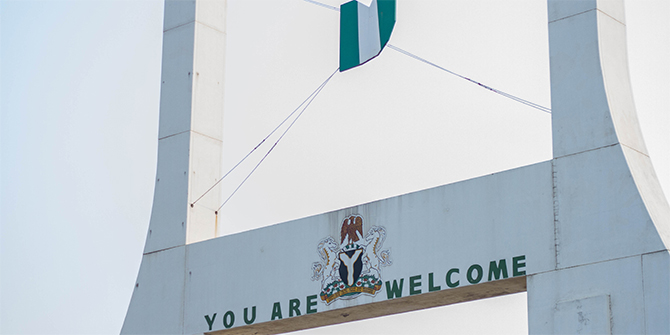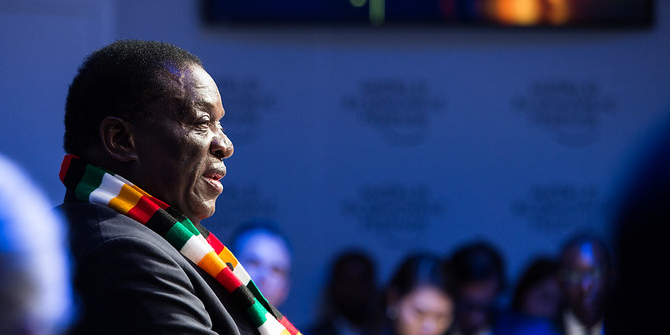Rwanda has announced plans to recapitalise its national development bank, consisting of fiscal transfers amounting to around 25 million USD in the next three years. This represents the latest step in the country’s efforts to put manufacturing back on the country’s development agenda, but there remains a need to stem corruption and balance competing demands between economic priorities and profits.
Long considered a financial basket case, Rwanda has since the 1994 genocide grown on average at 6 per cent per year, becoming one of the continent’s strongest economic performers. For Rwanda’s political leadership, this meteoric trajectory is the result of a policy agenda that seeks to transform the country from a commodity exporter into a leading tourism and finance hub.
This development strategy has attempted to leapfrog Rwanda from the primary sector of unprocessed agricultural production (mainly tea and coffee) to modern services – prioritising finance, insurance and real estate (FIRE) and meetings, incentives and conferences (MICE) over manufacturing. The country’s rather agnostic stance toward industrial production is salient in its twenty-year development strategy, laid out in 2000, which highlights service provision (particularly in tourism and finance) as Rwanda’s main engine for growth.
The results of these policies are tangible, as the country is emerging as one of the up-and-coming destinations for travel in Africa. The tourism sector has in fact become Rwanda’s largest foreign exchange earner, with projects like the 300 million USD Kigali Convention Centre helping the city rank as the second most popular destination for international meetings and conferences on the continent, after Cape Town.
Despite these positive outcomes, Rwanda’s economic ‘miracle’ has been deemed a mirage. MICE and FIRE, it is suggested, can not be long-term developmental substitutes for manufacturing, as achieving high-income status solely through service provision is, historically, unheard of. Services (particularly those highly skilled such as finance) may, for example, provide insufficient employment opportunities in a country where 64 per cent of the population work in agriculture.
Rwanda’s Domestic Market Recapturing Strategy recognises this growth model’s shortcomings, as revenue from services have not been enough to cover the country’s import purchases. To improve its finances and challenge its naysayers, the government now places more emphasis on the promotion of firms in light manufacturing (textiles and garments) and agro-processing, a diversifying of the economy the recapitalised Rwanda Development Bank is tasked with supporting.
Why the Rwanda Development Bank?
Though industrialisation in the nineteenth century, led by Great Britain, was achieved through gradual technical progress, structural change among late industrialisers has generally been premised on the rapid adaptation of already established production processes. The large amount of capital needed to accelerate industrialisation, in addition to the long gestation periods of such investments, often make lenders reluctant to support such ventures.
The risk aversion of private banks is further reinforced by their ability to make investments generating high short-term returns in services and real estate. On the other side of the financing coin, the industrial entrepreneur is unlikely to be the first mover in a field where they will shoulder additional risk, yet not reap all the rewards if other firms enter the market. Such concerns can be overcome by a planning body like the state, which can use banks under its control to sink large amounts of money into the economy to promote the development of several large industries, and provide transport and energy infrastructure.
National development banks in Brazil, Japan, South Korea and Germany have played an important role in (1) promoting the local production of parts and capital goods; (2) establishing exporting national champions and; (3) strengthening technological capabilities by working closely with the state and industry. South Korea’s KDB, for instance, had a 44.7 per cent share of manufacturing investment in the 1970s, used to develop capital-intensive projects in chemicals, shipbuilding, steel, machinery, automobiles and electronics run by industrial conglomerates like Samsung. More recently, Germany’s KfW was instrumental in financing the development, marketing and sale of Airbus’ new A350. This propensity for national development banks to intervene in financial markets offers promising prospects for many African states, where long-term credit for firms is scarcer than in any other region.
Discourse surrounding the role and importance of national development banks in Africa has historically been dominated by International Financial Institutions like the World Bank and the International Monetary Fund. These multilateral organisations initially supported the establishment of such banks on the continent as a tool for industrial policy promotion in the 1960s and 1970s. With the debt crises of the 1980s and 1990s, both Bretton Woods bodies called for the privatisation or closure of many in the name of structural adjustment, cautioning recipients of aid money from establishing new ones. The ability of these public banks during the 2008 Great Recession, nevertheless, to perform better than private banks and increase rather than decrease spending, has led to their resurgence in academic and policy debates.
Having a national development bank, however, is not sufficient. It needs to be properly managed. Excessive political interference through corruption, weak loan appraisals or evaluation mechanisms may lead to non-performing investments and debt accumulation. To stem corruption at the Rwandan Development Bank, its CEO from 2013 to 2017, Alex Kanyankole, was sentenced to six years in prison and ordered to pay around 24,000 USD in fines over a series of alleged discretionary loans totalling approximately 15 million USD in exchange for kickbacks. He was replaced by Eric Rutabana, the bank’s current chief executive.
This ruling, combined with the government’s objective to promote manufacturing (and the bank’s operating loss of around 4 million USD as of Q3 2018) has motivated state intervention. The bank’s reorganisation and planned recapitalisation is salutary, but it will need to weigh less on the government’s budget by receiving funds that can be earmarked elsewhere. Achieving Rwanda’s development goals, increasing income per capita while diversifying the economy, will therefore require its national development bank to strike a crucial balance between economic priorities and profits.
Photo: Suburbs of Kigali, Rwanda. Credit: rytc, Flickr.





